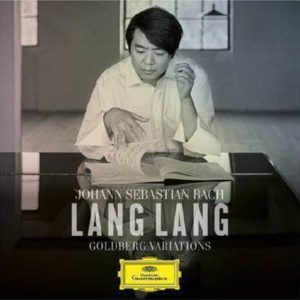By the sea.
With Dame Janet Baker in my ears.
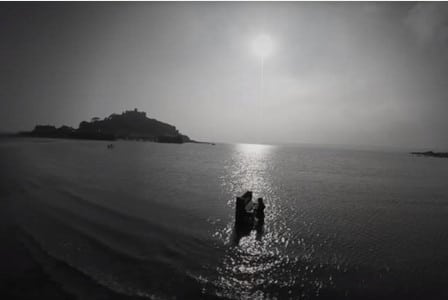
By the sea.
With Dame Janet Baker in my ears.

Welcome to the 95th work in the Slipped Disc/Idagio Beethoven Edition
Beethoven: Missa solemnis in D major, Op. 123 (1818-20)
In the summer of 1818 Beethoven was informed that his long-term pupil Archduke Rudolph, the Emperor’s younger brother, had been appointed archbishop in the Czech town of Olmütz and expected a suitable piece of music for the occasion. Beethoven, who was sketching ideas for a new symphony, his ninth, broke off to write a ceremonial work that turned into his largest and most personal spiritual statement. While writing it, his friend Anton Schindler said, ‘his whole personality seemed to take on a diferent form… never before or since have I seen him in such a condition of detachment from all that is earthbound.’
He sent his nephew Karl to be educated by a priest and read several books on Christianity. He examined alternative texts of the Mass and took them seriously. Yet, from what we know from his diaries and the notes of his friends, at no time in the period of composing the Missa Solemnis did Beethoven ever enter a church for the purpose of prayer, celebration or confession. He was not, by any recognised measure, a practising Christian. All that we can state with certainty is that he immersed himself in a state of spirituality for the purpose of composing theis Mass, and that his plan for it was larger and loftier than his only other work in this form, the Mass in C a dozen years earlier. Schindler reports: ‘From behind a closed parlour door we could hear the master working on the fugue of the Credo, singing, yelling, stomping his feet. … The door opened and Beethoven stood before us, his features distorted to the point of inspiring terror.’ This was a work that everyone found daunting.
While writing the Missa Solemnis, he also occupied himself with two movements of the ninth symphony, the last three piano sonatas, the Diabelli Variations and the string quartet opus 127. Detach as he was from earthly concerns, he was still Beethoven, working all hours to extract musical truths from himself so long as his failing health permitted. In his dedication copy he wrote to Rudolph: Von Herzen—Möge es wieder—Zu Herzen gehn! (from the heart – may it return – to the heart!)
Probably because it was beyond the resources of a small town like Olmütz, the premiere was given elsewhere. Beethoven’s idea was to twin it in a single concert in Vienna with the ninth symphony, a proposal that was quashed by the imperial censor on the grounds that sanctity and humanism did not go together (not that many in the audience would have survived such a double premiere). Beethoven eventually consented to a performance on April 7, 1824 in Saint Petersburg in a concert sponsored by Prince Nikolai Galitzin for the benefit of widows and orphans of musicians in the city’s orchestra. Whatever was heard in Russia, stayed in Russia; the rest of Europe was unaware of the work’s existence until three movements were performed in Vienna on May 7, 1824, preceding the premiere of the ninth symphony. The complete work was not attempted in Vienna until three years after Beethoven’s death and it has been reserved ever since for commemorative occasions, to be heard in awe and trepidation.
On record it is comparably scarce – barely three-dozen recordings, against 150 for the Ninth Symphony. In nine movements, the Missa Solemnis lasts around 80 minutes and requires four vocal soloists, chorus and large orchestra.
The earliest commercial recording, by Bruno Kittel and the Berlin Philharmonic in 1928, is a sought-after Polydor rarity with inadequate soloists. A copy, recently made available on Youtube, runs over 85 minutes. Kittel (not to be confused with a notorious Nazi criminal of the same name) was an entreprising individual who snuggled up to the Hitler regime and produced a version of Moart’s Requiem that he sanitised of all references to Jews and Zion. He was, on this evidence, a sluggish, inefficient conductor.
Serge Koussevitsky recorded the Missa Solemnis in 1938 with soloists of the Harcard Glee Club (who probably paid for the privilege); this, too, need not detain us. Arturo Toscanini was 66 before he attempted the Missa Solemnis. It was in Carnegie Hall, December 1940, a moment of ineluctable solemnity for the European continent the maestro had left behind. The recorded sound of the NBC Symphony Orchestra and Westminster Choir is barely tolerable, but the soloists are stellar – Zinka Milanov (Soprano), Bruna Castagna (Alto), Jussi Björling (Tenor), Alexander Kipnis (Bass) – and the atmosphere is historic. Listen to Björling’s entry in the Gloria and the world stops revolving on its axis. I return to this recording in small doses; anything longer would erode the lining of my ears. A 1953 Toscanini concert has marginally improved sound, but less imposing soloists.
Bruno Walter in 1948 at Carnegie Hall is marred by audience noise, although Lorenzo Alvary’s whispered Agnus Dei is one of the wonders of the recorded world. Otto Klemperer, who taped the work in Cologone, Vienna and in 1966 in London, is more deliberate than Walter and less uplifting. His soloists are a matter of taste – Elisabeth Söderström, Marga Höffgen, Waldemar Kmentt, Martti Talvela. There is also an Erich Kleiber Stockholm recording with Birgit Nilsson in the cast; poor orchestra, but who cares?
Leonard Bernstein’s 1960 New York Philharmonic performance is one of his landmark claims to be counted as a great classical conductor, rather than a phenomenal, all-rounder. Bernstein’s pacing and phrasing are exceptional and his Anglophone soloists – Eileen Farrell, Carol Smith, Richard Lewis, Kim Borg – are of high calibre. Only the Westminster Chorus is slightly sub-par. Herbert von Karajan hired the Wiener Singverein in his epic 1966 Berlin set with deathless soloists – Gundula Janowitz, Christa Ludwig, Fritz Wunderlich, Walter Berry. Amazing the difference an idiomatic chorus makes. Karajan, agnostic as he was, was steeped as Beethoven was in deep-seated Germanic Catholicism. Both Bernstein and Karajan had another go at the Mass but neither improved on first efforts.
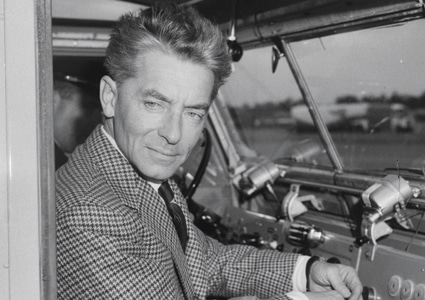
Two other mid-century maestros come into the reckoning. Georg Solti’s Chicago 1978 production has splendid Decca sound and soloists – notably Lucia Popp and Yvonne Minton – and an unexpectedly relaxed approach from a conductor who liked to drive his Beethoven hard. The Chicago brass herald the second coming as if it’s due at any moment.
Carlo-Maria Giulini, reverentially slow at 86 minutes, has a London orchestra and chorus playing well above themselves and a totally cohesive cast of soloists – Heather Harper, Dame Janet Baker, Robert Tear, Hans Sotin. The unnamed violin solo in the Sanctus is arguably the finest of them all.
I have more to say about recordings of this great piece, notably about the early-music movement and its prolonged assaults on Beethoven. … Continued here.
The chorus conductor Joseph Liebling, leader of many Bay Area ensembles, died on July 4 at the age of 93. He was music director of the Oakland Symphony Chorus for quarter of a century.
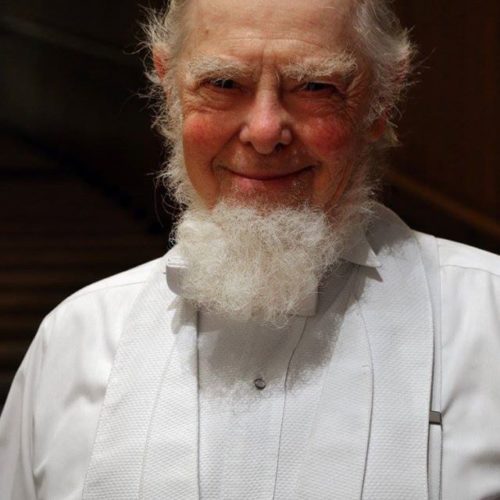
The Leipzig Gewandhaus has just rolled out a September-October programme made up essentially of chamber music. Details here.
The Berlin Philharmonic is promising scaled-down new-season details by the end of the month.
The shape of things to come.
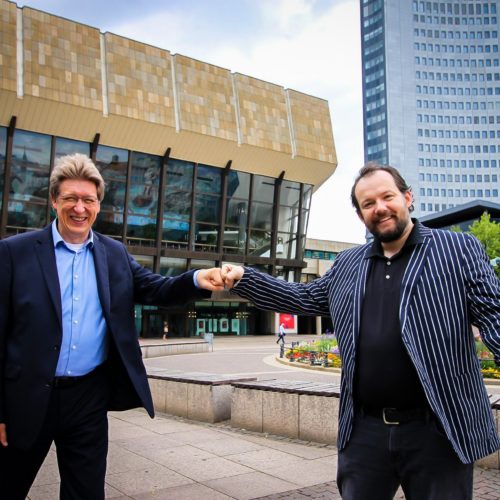
From the Lebrecht Album of the Week:
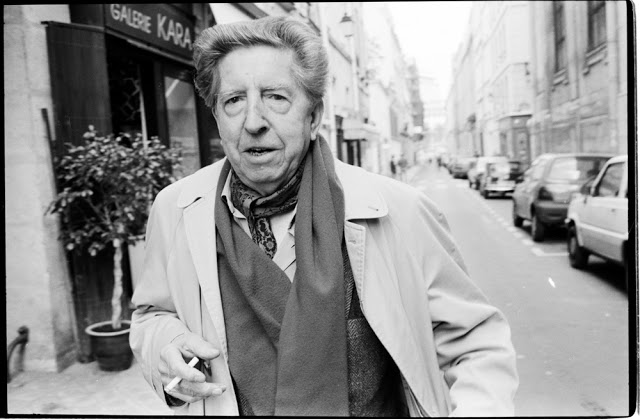
It is a grim fact of musical life that, when a composer dies, his music goes into limbo for at least ten years. In that time, music directors and programmers shove the complete oeuvre into a drawer and wait, they say, for the reputation to settle. For a few lucky composers, a decade passes and there is a revival. For the others, just silence.
The French composer Henri Dutilleux died in May 2013 at the age of 97. All his life Dutilleux struggled to make himself heard …
Read on here.
And here.
And here (in Czech)
And in Spanish
Made on Broadway.
We take no responsibility for the product.
It’s an objet trouvé.
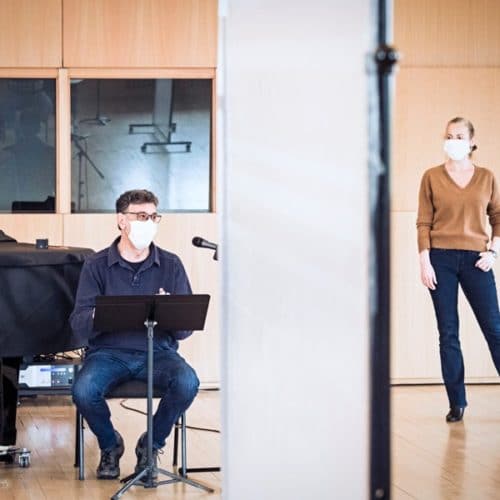
Chicago Classical Review reports that Jeffrey P. Haydon has been appointed president and CEO of the Ravinia Festival. Haydon is currently CEO of the Caramoor Festival in Katonah, New York.
He succeeds Welz Kauffman, who has been in charge since the turn of the century.

The former culture minister Franck Riester, 46, has a new job.
His title is Ministre délégué auprès du ministre de l’Europe et des Affaires étrangères, chargé du Commerce extérieur et de l’Attractivité.
He is attached to the Foreign Ministry as the official in charge of external commerce and attractiveness.
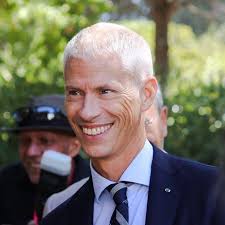
Scherzo reports that the district council of the Madrid district of Arganzuela voted last night to rename one of its schools, taking down the plaque for Placido Domingo after receiving a petition with 1,300 signatures.
The singer has been accused elsewhere of sexual harrassment, but not apparently in Spain.
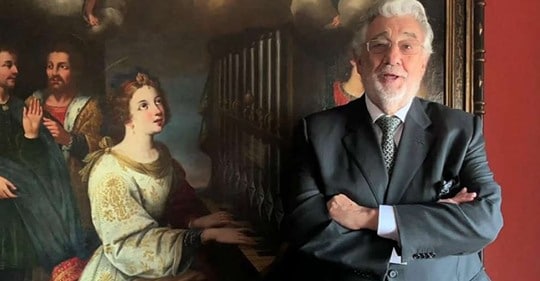
The official gesture is flimsy and inconsistent. Spain is full of memorials to the genocidal Ferdinand and Isabella and to many murderous colonialists. Their statues still stand all over Madrid.
DG are to release a twin-set in September, it was announced this morning.
Press release:
Pianist Lang Lang has conquered a musical Everest, realising a lifelong dream with his brand-new recording of J. S. Bach’s monumental keyboard work Goldberg Variations. Set for release on Deutsche Grammophon on 4th September, Lang Lang gives two complementary performances. The first was recorded in a single take in concert at the Thomaskirche in Leipzig, Bach’s workplace for almost 30 years and his final resting place; the second was made soon after, in the seclusion of the studio. The two recordings, purchased together as part of a super deluxe edition, make this a world-first simultaneous live and studio album release.
“I’m now 38 and, while that’s not old, I think the time was right for a new stage in my artistic development,” says Lang Lang. “I’ve moved into new terrain with the Goldberg Variations and really immersed myself fully in this project. My goal as an artist is to keep becoming more self-aware and more knowledgeable, as well as to keep offering inspiration to others. It’s an ongoing process, but this project has taken me a little further along the path.”
Lang Lang’s long journey into the heart of one of the greatest works in western classical music began with childhood lessons learning Bach’s music in his native China. He was just 17 when he played the Goldberg Variations from memory for the conductor and pianist Christoph Eschenbach, an unforgettable experience for both musicians. Lang Lang subsequently sought expert advice from leading interpreters of the composer’s music, conductor Nikolaus Harnoncourt and harpsichordist and early keyboard specialist Andreas Staier among them.
